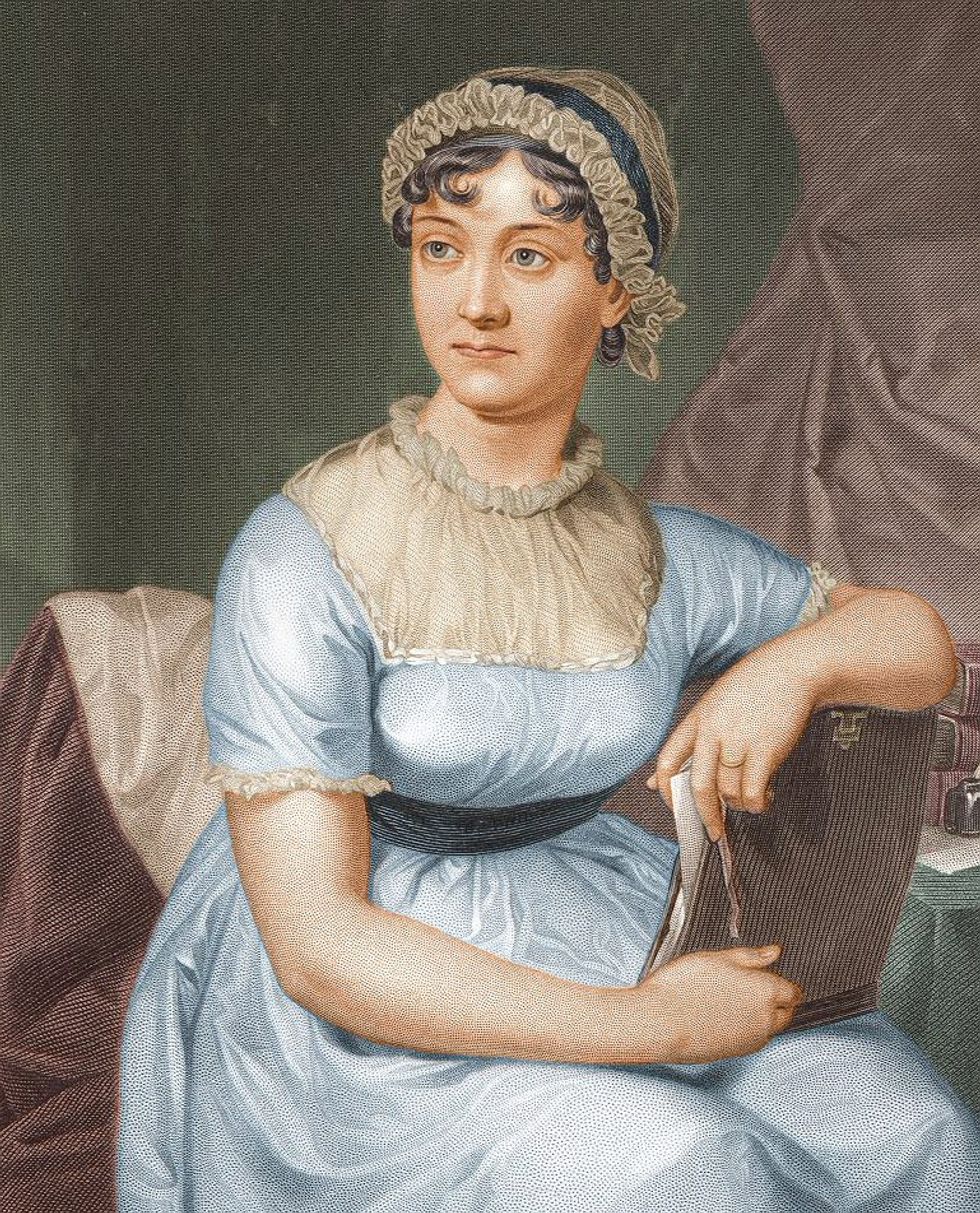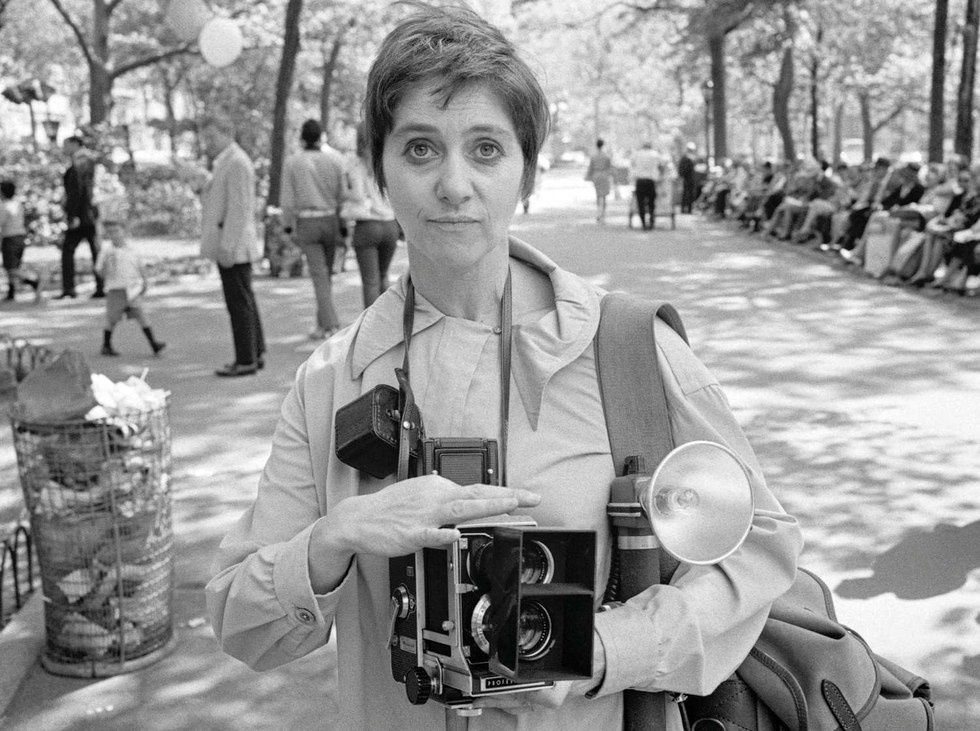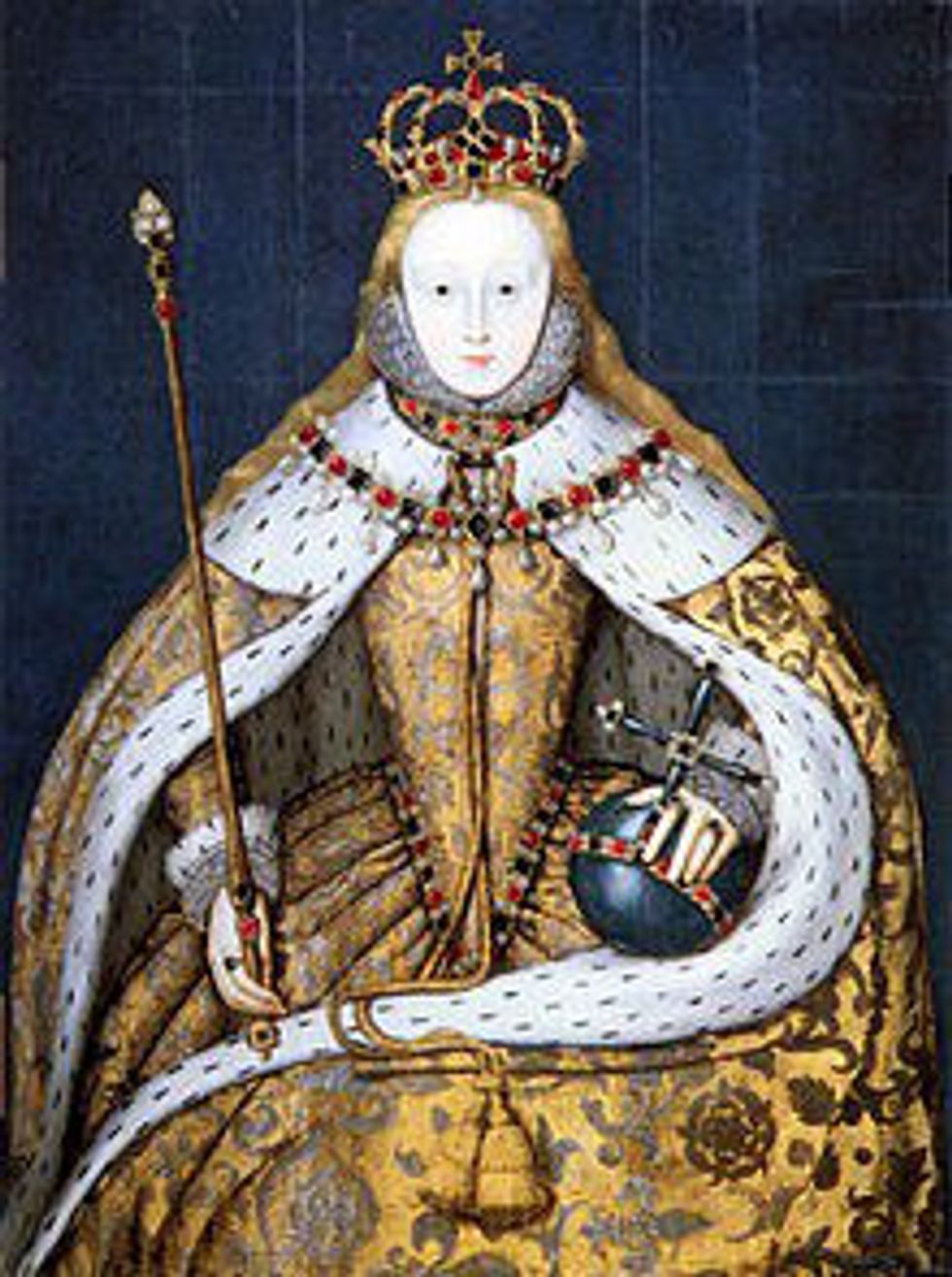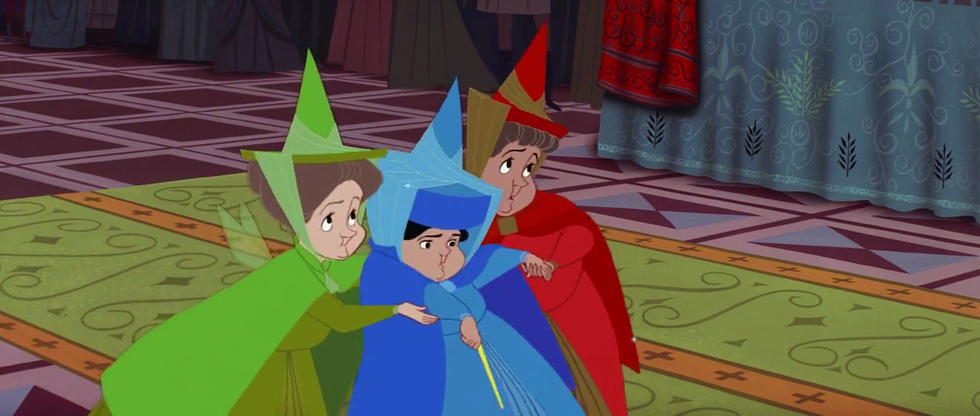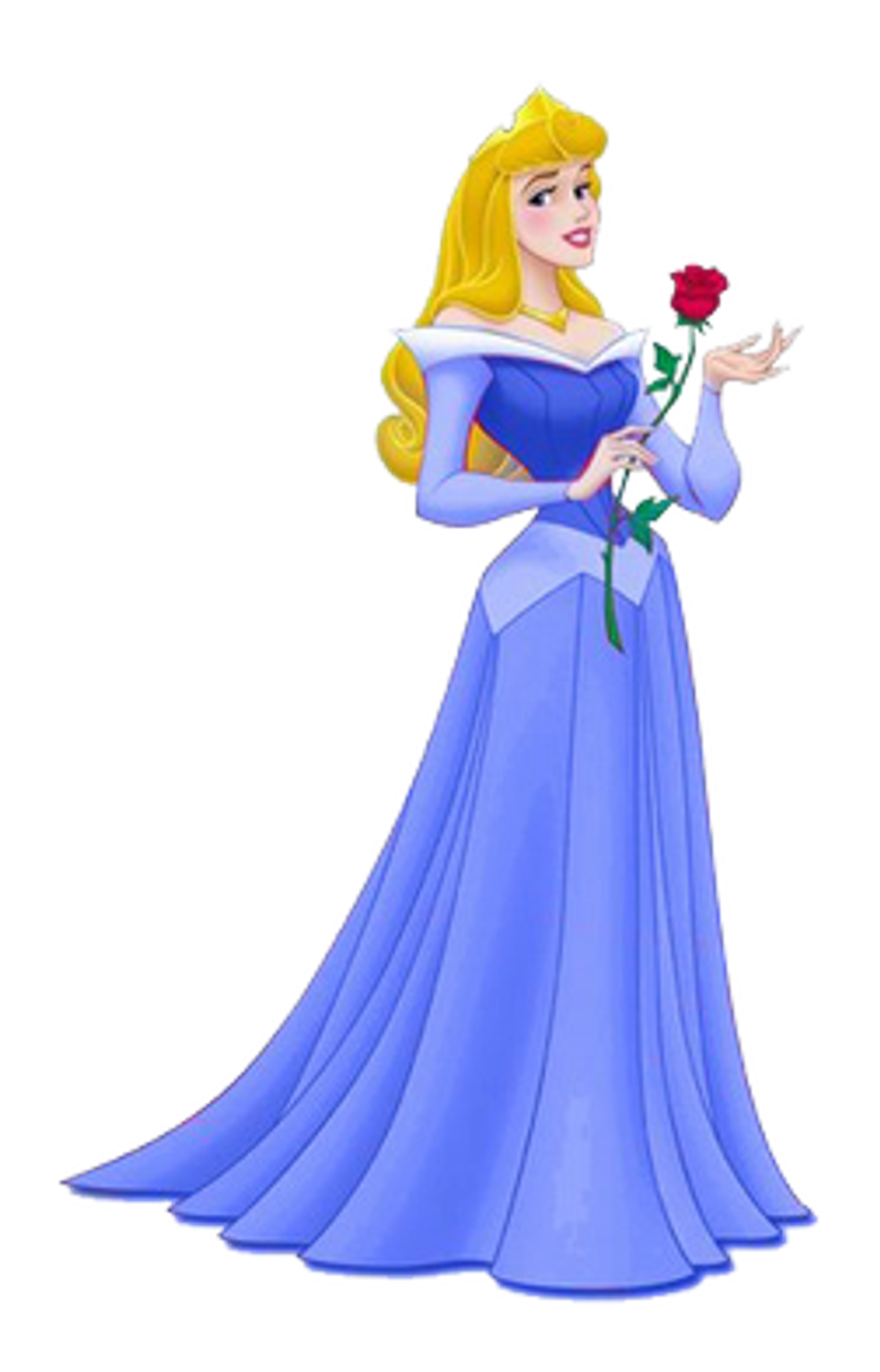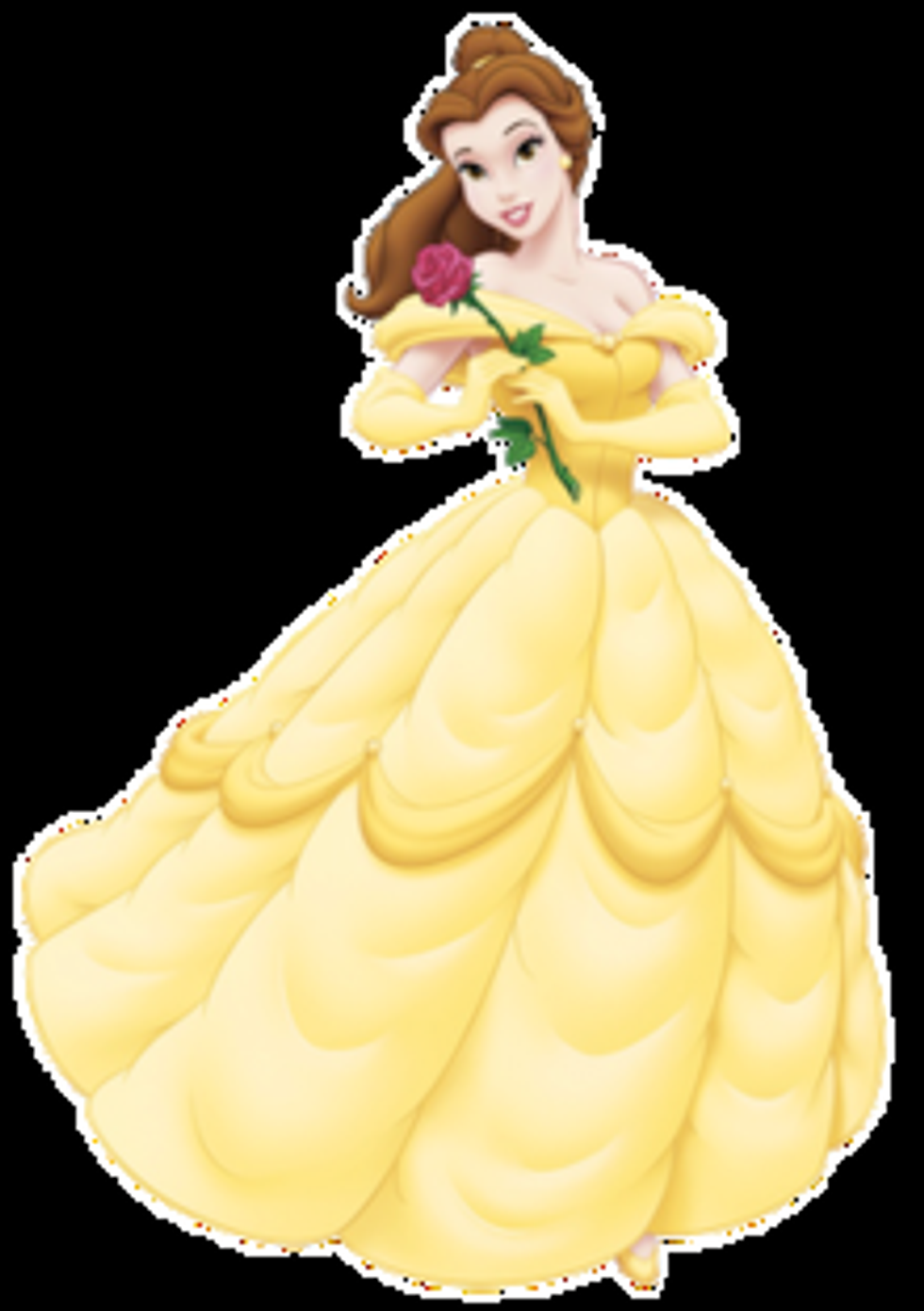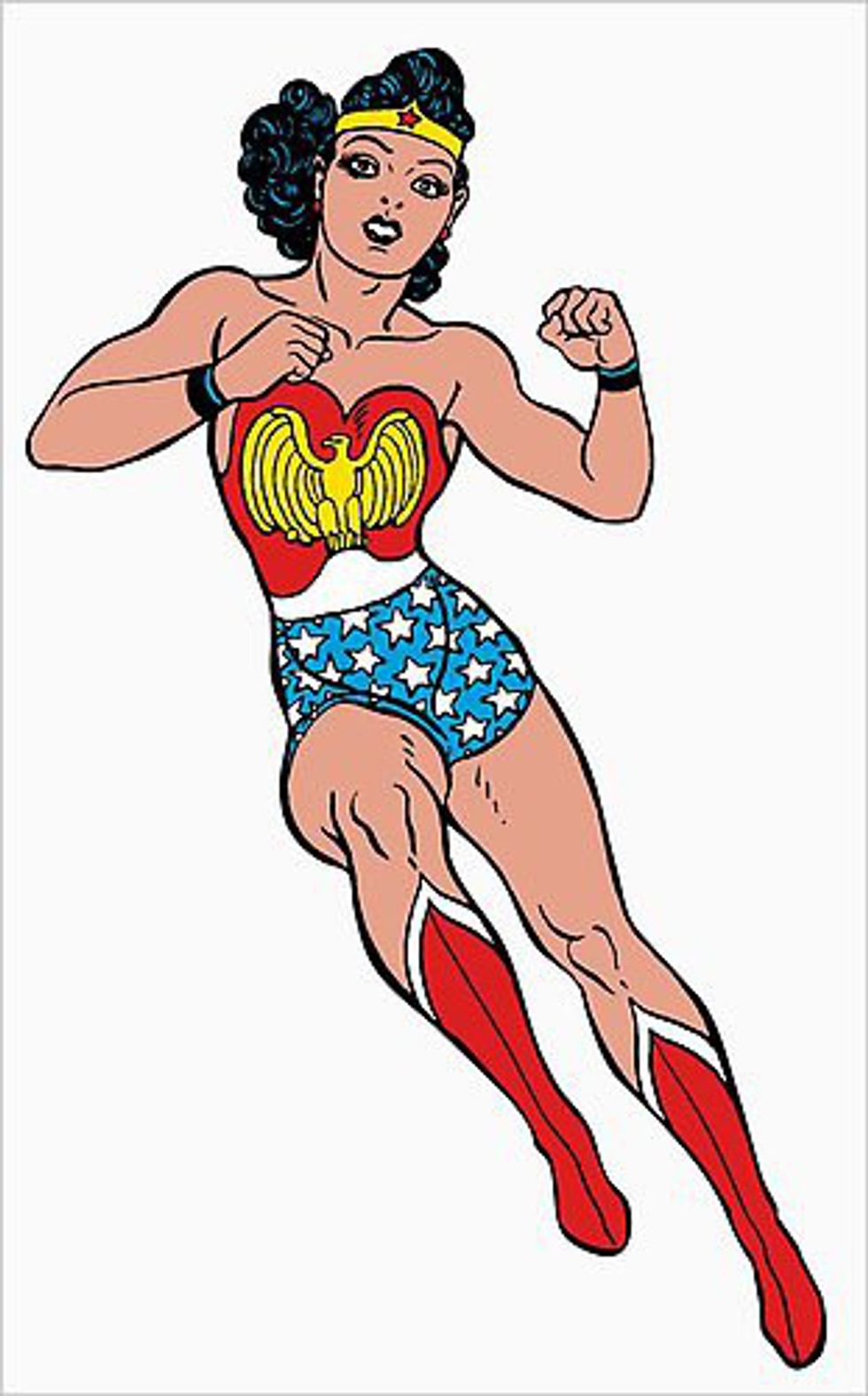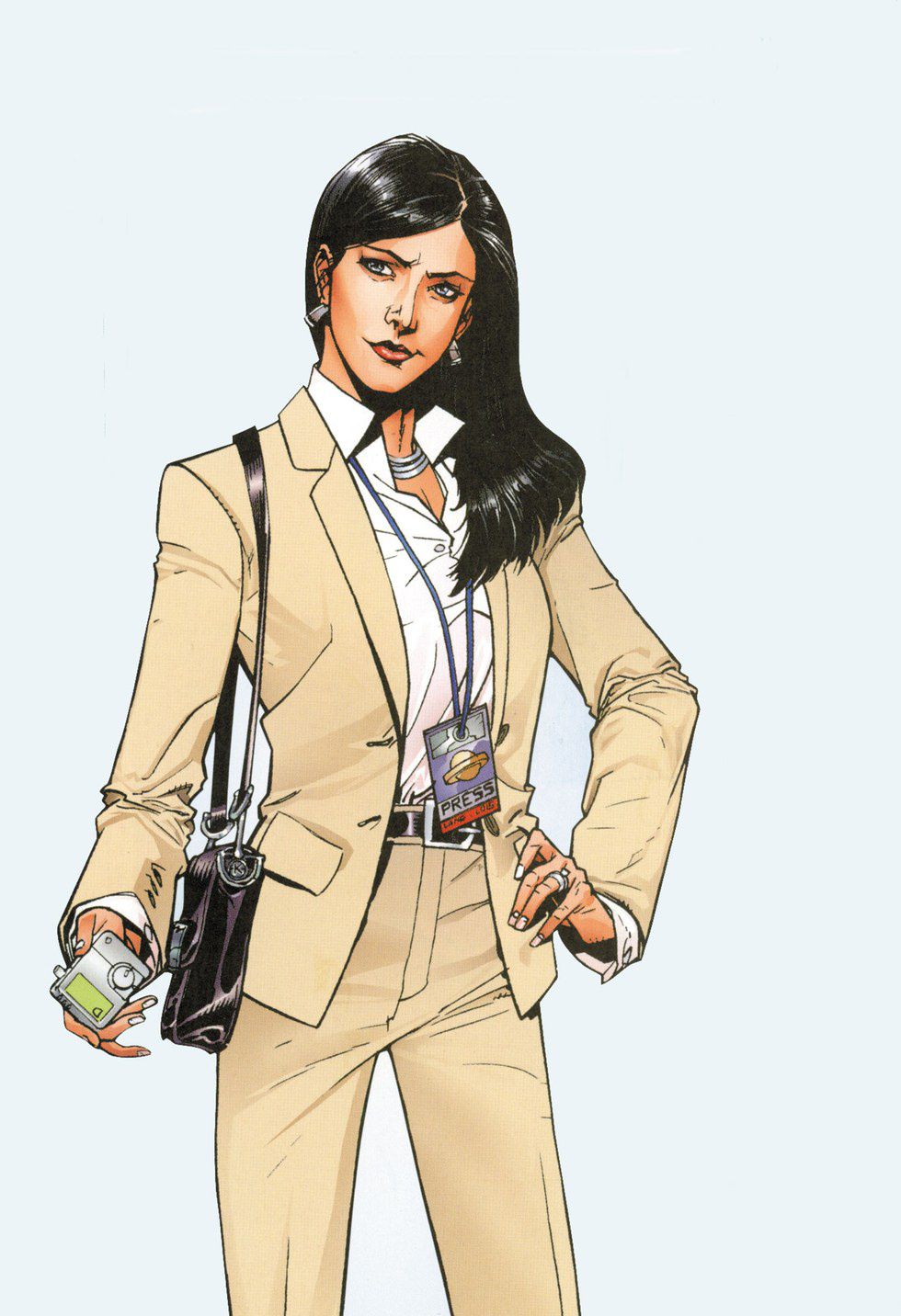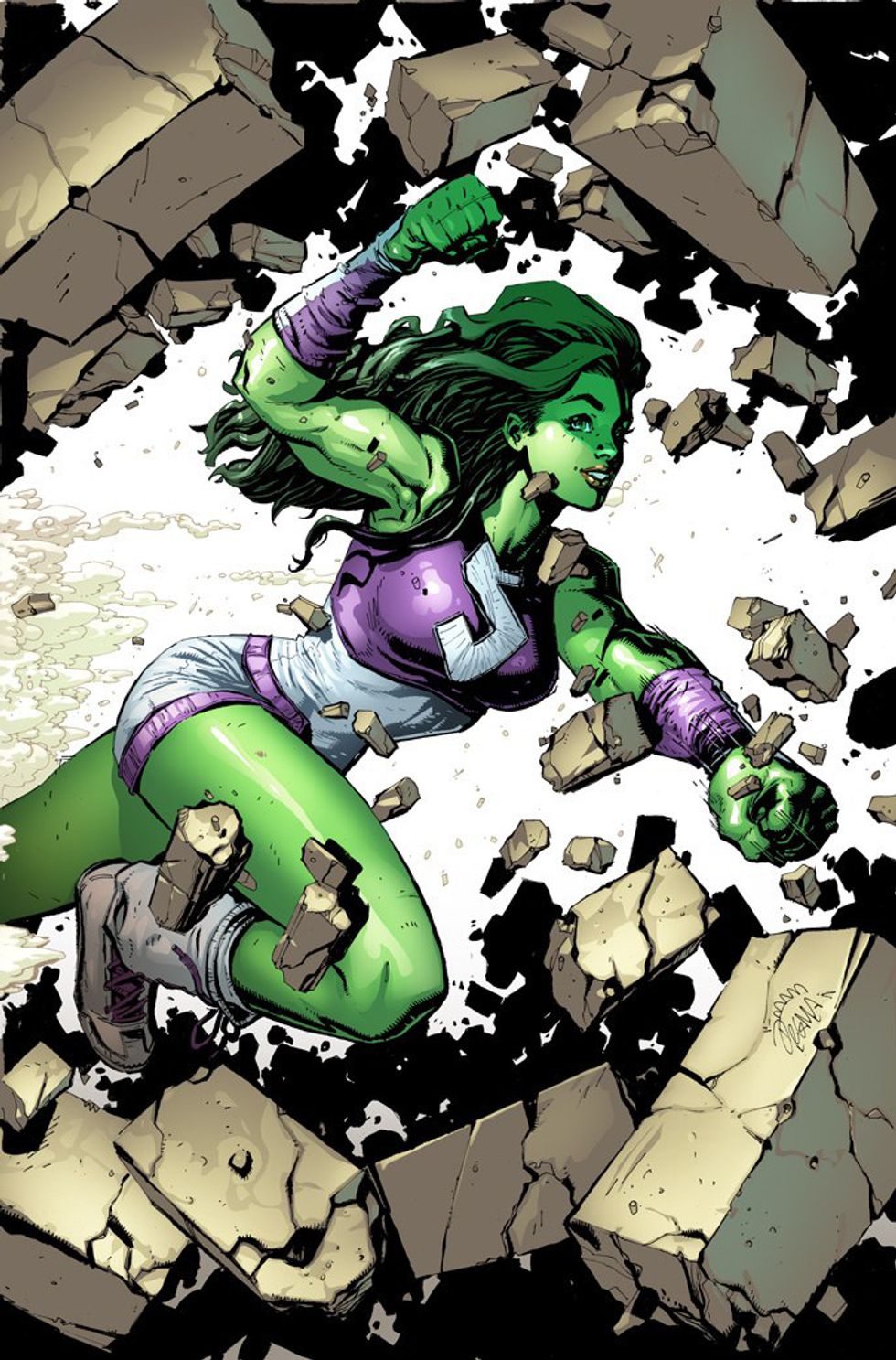For many of us, 2016 was a year of tragedy. And two of its most recent casualties, Carrie Fisher and Debbie Reynolds, hit me and countless others very hard. I grew up watching Debbie in Singin’ in the Rain, which was, and still is, one of my favorite musical movies. And I hardly have the words to express how much I adored and admired Carrie Fisher. Her outspokenness, intelligence, and take-no-shit demeanor were such an inspiration for me that I will do everything I can to live up to her example. I cycled through several different ideas to write about for this article, the majority of them linking back to her death. But instead of writing about all of the death and loss that has happened in 2016, I decided that it would be best to celebrate her life, and the lives of other women who have similarly inspired me to be the woman that I have become and continue to strive to be. So, here is an excerpt from this insanely long list of these women, some living, some dead, and some fictional, who have had a profound effect on the person I have become today, and who I hope will continue to inspire others in the future.
1. Pharaoh Hatshepsut
When I was in third grade, I became obsessed with Ancient Egypt, and the obsession lasted for years. However, early in my years of constant reading, I fell upon the reign of Hatshepsut. And boy, she was astounding. She officially ruled Egypt for 21 years during the 18th Dynasty, beginning 13 years previous as regent for her stepson (who would become Thuthmose III) and then eventually taking over the position of Pharaoh entirely. And, although she was neither the first nor last woman to rule the Egyptian empire (Merneith and Sobeknefru before her and Twosret after her), she was the first woman to rule Egypt who assumed the full power of the position of Pharaoh. The fact that she managed to do so is clear in her decision to be depicted entirely as male in her statuary while retaining her female name in all writings during her reign, thereby making herself represented exclusively as a Pharaoh in her monuments and representations (of which there are many), rather than as a Queen. Her reign brought in a golden age for Egypt, bringing peace to the empire and bolstering the economy with significant trade deals and the construction of her aforementioned mass monuments. She is considered one of the greatest Pharaohs in Egyptian history, and despite attempts to erase her from the Egyptian timeline by her successors, she remains one of the most well-known Egyptian monarchs in history.
2. Jane Austen
Okay, so, Jane Austen really doesn’t always get the credit she deserves. Her books are often brushed off as little more than old romance novels, and she can be made the butt of jokes on a regular basis. However, the power of Jane Austen, as well as the power of her heroines, is nothing to be doubted -- I mean, really, how can one doubt how brilliant each of the Bennet sisters are? Her work greatly critiques the popular sentimental novels of the 18th century, and her use of irony and constant social commentary helped to usher in the 19th century literary realism movement. Her books haven’t been out of print since 1833, and her satirical writings provided a biting reaction against the romantic and gothic novels of the period by utilizing the styles while simultaneously critiquing their flaws, particularly in regards to their treatment of their central heroines. She also dealt with her publishers entirely on her own, and, upon receiving unwarranted critiques from the Prince Regent (George IV)’s librarian on how to structure her future novels, began to write Plan of a Novel, a short work satirizing his ideas. Austen was a woman who truly blazed a trail in writing for other women, and she did it on her own terms -- she wrote admirable heroines in situations true to her life experience while also critiquing styles she found antiquated.
3. Diane Arbus
Diane Arbus’s photographs are stunning. During her short life, Arbus shot hundreds of photographs of people ostracized by her contemporary society - prostitutes, nudists, circus performers, transgender individuals, among others who would have been perceived as surreal or ugly by the general population during the 1950s and 60s. She was the first American photographer to have her work displayed at the Venice Biennale (a year after her death), and received two Guggenheim fellowships during her life, first in 1963 and again in 1966. She developed strong bonds with the people she photographed and would return to re-photograph many over the years, and her photographs were hailed as an unedited look at modern life both before and after her suicide in 1971. Arbus took what was considered grotesque and made it unapologetically beautiful, and they remain absolutely stunning today.
4. Dorothy Roubicek Woolfolk
I cannot even begin to express the amount of love that I have for Dorothy. She was the first female editor hired at DC comics in 1942, and she returned to the industry in 1971 to become DC’s first female full editor, taking over their romance comics line, as well as briefly Superman’s Girl Friend Lois Lane, Wonder Woman, and Supergirl. In the 1940s, she played a major part in the controversy surrounding the bondage imagery in Wonder Woman, acting as a liaison and problem solver between Wonder Woman’s creator, William Moulton Marston, the head of the company, M.C. Gaines, and the advisory board for the comic. She also is credited as sparking the creation of the fictional metal Kryptonite, which first appeared in Superman #61 in 1949. And in 1971, she breathed new life into DC by hiring new, young writers and artists, such as Alan Kupperberg, Liz Safian, Sal Amendola, Howard Chaykin, Mary Skrenes, and Alan Weiss. She also single-handedly brought the women’s liberation movement to DC, particularly in Superman’s Girl Friend Lois Lane, but also in her romance lines, where her heroines gained more agency outside of their relationships with men. During her seven-issue run on Lois Lane, Lois dumped Superman (who had essentially been emotionally abusing Lois since the creation of the comic in 1958), moved into a new apartment with three other women, quit her job at the Daily Planet, and began to freelance while traveling the world with her new roommates (who often referred to each other as sisters). Dorothy was also in communication with Gloria Steinem about the revamping of Wonder Woman that was set to occur in 1972 and was originally meant to edit the new series (and was even credited in Ms. magazine as such), but that storyline, along with each of the others she had managed, were all eventually taken from her and given to Robert Kanigher, and she was eventually fired in 1974 by Carmine Infantino, who claimed she never turned in her books on time -- a blatantly false statement, considering that under her supervision, a large number of books that had previously been bi- or trimonthly publications became monthly ones. The feminist leanings of all of her previous books were quickly eradicated, and the first issue of Wonder Woman under Bob Kanigher featured “Dottie Cottonman, Magazine Editor” being shot in the head by a sniper within the first few pages (the image looked remarkably like Dorothy). However, despite the unceremonious nature of her leaving the company and the initial erasure of the progress she had brought to DC, Dorothy continued to speak about the importance of women in comics, even weeks after her firing, and her legacy lived on in the writers and artists she had hired. Dorothy blazed a trail for women in comics, and although now she is rarely discussed in detail, the importance of her work in the industry cannot be downplayed.
5. Elizabeth I
Elizabeth I was even more powerful than she is often given credit for. Her reign ushered in a grand period of dramatic art, and the naval battle she led against the Spanish Armada is one of the most famous in history. She reestablished the English Protestant Church (which would evolve into the Church of England), and she avoided the systematic persecution of those who did not follow her religion. However, perhaps more than anything, Elizabeth was a survivor. Since the execution of her mother, Anne Boleyn, by her father Henry VIII, Elizabeth was constantly in and out of favor with the king, being sent in and out of exile and removed and returned into the line of succession to the crown. After Henry’s death, Elizabeth was taken in by his widow, Catherine Parr, and her new husband, Thomas Seymour, who, based on several reports, persistently sexually harassed Elizabeth during her time there. She was imprisoned by her sister Mary throughout the course of Mary’s reign, accused of participating in plots to overthrow her. Even after assuming the throne in 1558, Elizabeth was declared illegitimate by the Pope, which resulted in a number of plots against her life throughout the rest of her reign, all of which ultimately failed. Elizabeth was an immensely strong woman who led her country for nearly half a century, and that alone is an incredible feat.
6. Emma Thompson
I am, and always will be, madly in love with Emma Thompson. Every performance I have seen her in, from Much Ado About Nothing, to Love Actually, to the Harry Potter films, to the Lincoln Center production of Sweeney Todd I was lucky enough to see her in live, has been such an absolute delight to watch, and she always steals the screen or stage every time she is present. When watching her in Sweeney Todd, I remember being absolutely entranced by her, practically hanging off the balcony in order to be closer to her and observe her every action to the best of my ability, because she is a woman capable of telling an entire story with the twitch of her little finger, and I didn’t want to risk missing a second. Every Thanksgiving, my family and I watch Love Actually after dinner, and every Thanksgiving, she makes me cry in a scene in which she doesn’t speak a single word. And she is not only brilliant in her acting, but in her activism. She is extremely active in human rights work, and she is chair of the Helen Bamber Foundation for the Care of Victims of Torture, as well as affiliated with several other human rights groups, as well as an outspoken environmentalist. She is extremely outspoken about these and other social issues, to the point of criticism from various outlets, a fact that does not bother her in the slightest. Emma Thompson is a brilliant woman who does, and will continue to use her position of fame to fight for those less fortunate than her, and that is an incredibly admirable pursuit.
7. Anne Bonny and Mary Read
First of all, pirates are awesome. But female pirates are ridiculously awesome. And Anne Bonny and Mary Read are two of the coolest ones out there. Much of their lives are shrouded in mystery, due to the fact that the primary (and practically only) documentation of them exists in Captain Charles Johnson’s A General History of the Pyrates. After stints of piracy and years of disguising themselves as men, both Bonny and Read ended up serving on John “Calico Jack” Rackham’s crew. The ship was attacked in 1720 by a “King’s ship,” and the two held their own practically alone against the officers on board before they were eventually arrested and imprisoned. The two avoided hanging by pleading pregnancy, but Read died in prison a few months later. Bonny, however, may have escaped -- no documents exist recording her death, and a slight evidence exists that she may have had her freedom bought back by her father, who then married her off to a Jamaican high standard commissioner. Regardless of their end, Anne and Mary were a fearsome pair, and the fact that they managed to defend their ship against the King’s troops alone, even for a brief period, is an incredible feat and proves that the two of them were not to be crossed.
8. Aphra Behn
The importance of Aphra Behn to female writers cannot be denied. She was one of the first women writers in England to earn her living by her writing, and that alone makes her stand out in history. She was extremely loyal to the Stuart line of English royalty, and she worked as a spy for a period for King Charles II. She began achieving success as a playwright during the Restoration period, and she has become known as a key dramatist of seventeenth century theater. Following her death, a large number of female dramatists credited her as being their most essential predecessor, claiming that it was she who blazed the trail for women writers everywhere. Although her popularity has ebbed and flowed throughout the years, it cannot be denied that Aphra Behn’s success helped to open up more opportunities for women to become successful writers in the years after her life.
9. Flora, Fauna, Meriwether, Aurora, Cinderella, and Belle
I was entirely obsessed with Disney movies as a little girl, and the obsession continues today. And for a long period, that obsession revolved around princesses. And my three favorites were always Cinderella, Aurora, and Belle. Cinderella was kind, and she persevered through a mass amount of abuse from her stepmother and stepsisters, and she still managed to come through the entire ordeal without wishing them any harm or wrongdoing. Belle was smart and strong and held her own in a place that was much to small and close-minded for her, and she treasured books and stories very deeply, both things that even that early in my life I could easily relate to. But Aurora, she took the cake. Although she may not seem extraordinary at first glance, I found Aurora to be immensely powerful. She resisted the fate that was bound to her by Maleficent’s curse, and her clear connection with the natural world turned her into an unearthly being of a different variety than the fairies -- she was a sprite, who belonged in the forest, singing the day away and doing only as she wished. And her fairies were so very special to me, too, because at a point far too early for me to really remember, I pegged the three of them as having similar personalities to the three most important women in my life -- Flora was my grandmother on my mother’s side, strong, in control of every situation, and planning everything down to the most minute details. Fauna was my grandmother on my father’s side, dreaming and living in a romanticized world where all badness could easily be defeated. And Meriwether was my mother, often frustrated, but smart and resourceful and quick to solve any problem. Although Disney princess movies are often hailed as being bad influences on children, I disagree -- these six characters were essential to me, and they have had a major positive impact on the woman I’ve become, and I know they will continue to do so for children everywhere.
10. Wonder Woman, Batwoman, Batgirl, Catwoman, Lois Lane, Black Widow, She-Hulk, Fantomah
I could list so many more superheroines here than I already have who have had an impact on me as a person. My love of comics is limitless, and my love of superheroines in particular, is very strong. Wonder Woman entered the world as an iconic feminist symbol, setting out to show the world that women were equal to men, and that a patriarchal society ultimately caused more harm to the world than good. Batwoman is unapologetic, fierce, and brilliantly smart, able to easily stand her own against Batman and anyone else she could be compared to, and her position as one of the first lesbian superheroes is extremely important. Batgirl can take down anyone she encounters and doesn’t sacrifice her sense of humor to do it, and she retains a youthfulness that so many other superheroes become too bitter to maintain. Catwoman knows exactly what she wants and how to get it, and she does. She is confident in how to take care of herself and her own, and she won’t apologize for anything. Lois Lane withstood decades of abuse from Superman while still maintaining her place as a top reporter at the Daily Planet, and she is willing to throw herself into an immense amount of danger in order to reveal the truth behind a story. Black Widow is an army all to herself, able to survive even when all odds are against her, and able to persevere even when life throws her all sorts of pain imaginable. She-Hulk is the epitome of smart and sexy, maintaining her job as a top-notch lawyer while refusing to sacrifice her personal life. And Fantomah is all-powerful and refuses to let anyone harm the land she presides over, and she isn’t afraid to do absolutely anything she deems necessary to keep it safe. These heroes, among many others, have shown me, above all, how to be confident in who I am and what I stand for, and for that alone I am grateful.
11. Hypatia of Alexandria
Hypatia of Alexandria is the first female mathematician in recorded history, as well as an expert astronomer, philosopher, and physicist, and quite possibly the last scientist to have ever had access to the library of Alexandria. Unlike most of her female contemporaries, Hypatia was entirely in control of her life, having never married and taking on the position of headmaster at an extremely prestigious school in Alexandria. However, the city was in massive conflict during her life, and it ultimately resulted in a grisly death for her, despite her position of esteem. None of her work survives today, but it is clear from the work of her students and of writings about her that she helped to discover linear algebra. Although numerous tales about her life have been spread by numerous people with extremely different agendas, her place in history is extremely important, and the amount of respect she garnered during her lifetime was no small feat.
12. Aspasia of Miletus
Okay, so Aspasia was an immigrant to ancient Athens who worked as a hetaera (essentially a high-class courtesan and entertainer) and ran a brothel. This allowed her more agency in comparison to the other women of Athens, as hetaerae were highly educated, more independent, required to pay taxes, and able to participate more fully in public life. However, Aspasia was more influential than the typical hetaera -- she quickly became the mistress of the famous statesman Pericles, and she moved in with him after his divorce from his first wife. Aspasia was highly intelligent, and her house became a gathering place for the most prominent thinkers and writers in the city, including the philosopher Socrates. Many sources state that her teachings were of influence on Socrates, and friends of his often took their wives to her home to hear her converse, despite her controversial position. Plato also attributes Aspasia as having taught a great number of Athenian men, including Pericles, to be orators, as well as having written orations for Pericles. Much of her life remains controversial, with little hard evidence to completely back up what little exists, but regardless, Aspasia was a highly intelligent woman in a high position of influence in a city quite literally dominated by men, and she commanded respect from them, despite their technical authority over her.
13. Boudica
Boudica is one of the ultimate warrior queens. During the height of the Roman Empire’s power, she and her army of 120,000 Iceni warriors (which grew to approximately 230,000) caused so much chaos that the Romans seriously considered giving up their holdings in Britain entirely. After his death, Boudica’s father, the king of the Iceni tribe, willed half of his belongings to her and half to the Romans in an attempt to avoid conflict, but this failed miserably -- the Romans refused to acknowledge Boudica’s rule over the Iceni because she was a woman, they insisted that all of the king’s money was theirs as well as a large amount of Iceni land, and to top it off, they publicly flogged Boudica and raped her two daughters. Obviously, this didn’t go over very well, and Boudica and her soldiers completely burnt down three Roman cities, including Londinium, which would eventually evolve into modern day London. They killed approximately 70,000 Roman civilians in particularly gruesome ways and essentially became a major source of shame for the Romans - in part because of the fact that the Iceni army was being led by a woman. Eventually, the Romans did take the Iceni down, and Boudica died either in battle or by swallowing poison, but regardless, the amount of chaos she brought up against the Romans in order to protect her people was no small feat.
14. Tina Fey and Amy Poehler
I can’t begin to express how much I love these two. Both Tina and Amy have helped to blaze trails for women in comedy over the past decade, particularly in writing. Together, they are an unstoppable duo who were the first female team to host Weekend Update on Saturday Night Live, and they’ve collaborated on a number of movies and other shows. Separately, both participate in several outreach and charitable programs -- Tina has worked to support autism research, and is a supporter of Mercy Corps, a global relief and development organization, and the Love Our Children USA organization, which combats violence against children. Amy’s former troupe the Upright Citizens Brigade is one of the best improv programs in the country for young comedians, and her YouTube show Smart Girls at the Party is geared to “help girls gain confidence in their own aspirations and talents.” Both women are incredibly intelligent, and their unapologetic outspokenness is something to be greatly admired.
15. Ida B. Wells
So, Ida B. Wells was a total badass. 71 years before Rosa Parks’s refusal to give up her seat on the bus, Wells did the same thing on a train -- and after a gang of men forcibly removed her from the train car, she sued the company and won. Wells’s most important work was her anti-lynching journalism. Lynching was extremely more violent and gruesome than it is often assumed to be today, and the lynchings she reported on resulted in her pamphlet titled Southern Horrors, which countered the mass number of lynching myths that existed at the time, particularly the claim that lynching was a response to black men raping white women. In the pamphlet, Wells laid out a mass amount of cases, proving that the majority of lynchings were the result of political or economic motives, or just simply racist violence. A week after its publication, a mob broke into the office of her newspaper and broke it to the ground, and she was threatened with lynching on a regular basis for the rest of her life. However, Wells continued to report and investigate lynchings for the next forty years, and she refused to censor her writings, which disturbed even other activists and nearly had her left off the NAACP’s founders list. Wells never backed down, and even her family and children began to accompany her on speaking tours and fully supported her writings. She refused to sacrifice her principles for the comfort of others, even when it threatened her life, and she is to be greatly admired for it.
16. Julie d’Aubigny, or La Maupin
La Maupin’s life was an insane ride that resulted in her having to be pardoned by the king of France twice. Her father, a fencing instructor who frequented brothels, bars, and gambling dens, taught her how to fence while simultaneously using his skills to drive off any of her potential suitors. Naturally, she began to pursue her father’s boss, who married her off to a clerk in an attempt to cure her antics, and in response, she took another swordsman as a lover and left home to travel around France, earning her living as an opera singer and duel demonstrator, normally dressed in male garb (her skill as a swordswoman caused some people to doubt that she was a woman, to which she once responded by tearing off her shirt to prove her gender). She quickly ditched her swordsman boyfriend, declared herself tired of men, and seduced a merchant’s daughter, whose father sent her to a convent to try and separate them. La Maupin then joined the convent, where they resumed their relationship, and when an old nun died, she disinterred the body, put it in her lover’s room, and set the convent on fire as the two escaped (she tired of this lover a few months later, returning her to her parents and disappearing). For this action, she was sentenced to death, but through her father’s boss (remember him?), she got herself a pardon and ran off to join the Paris opera. There, she essentially became the 17th century equivalent of a rockstar, fighting and sleeping with many of her stage contemporaries, and earning herself yet another pardon after dueling (and beating) three men over the potential courtship of a noblewoman. La Maupin was unapologetically who she wanted to be and took no shit from anyone, fighting to defend her own honor and choices, consequences be damned. If that’s not a fantastic life plan, then I don’t know what is.
17. Katharine Hepburn
Katharine Hepburn was one of the most perfect beings to walk the earth, and it is practically impossible to convince me otherwise. She was capable of playing literally any role, from screwball comedy to classic literary drama, and she was fiercely outspoken and independent. After she graduated from Bryn Mawr, her work on Broadway caught the attention of Hollywood agents, and she earned her first of four Academy awards for her third film, Morning Glory. She then began to flop, but quickly masterminded her comeback by buying the rights to The Philadelphia Story and refusing to sell them unless she starred in the film. She continued to work well into her old age, finally retiring in 1994 after 66 years in the film industry. Hepburn blatantly refused to conform to society’s expectations of women and to Hollywood’s public lifestyle, and she would make up new, fantastical answers to questions about her personal life asked by reporters, almost always giving a different answer to the same question. She was very assertive, and she also wore trousers in public well before it was fashionable for women to do so (which was quite the scandal). As she got older, she became slightly more open with the public, and she became more vocal about her liberal political views, as well as openly supporting birth control and abortions. Hepburn was all about being entirely herself and doing exactly what she wanted, and for that, she is and always should be admired.
18. Emmeline Pankhurst
Emmeline Pankhurst was a British political activist best known for leading the British suffragette movement and aiding in gaining the vote for women in 1918. She founded and was active through the Women’s Franchise League, which advocated suffrage for all women, married or unmarried, and when the League broke apart, she attempted to join the Independent Labor Party through her friendship with socialist Keir Hardie, but was denied due to her gender. After the death of her husband, Pankhurst formed the WSPU, or Women’s Social and Political Union, an organization that identified itself as independent from political parties and focused on “deeds, not words.” The group essentially became what was considered a terrorist group, smashing windows and assaulting police officers, and Pankhurst and her daughters (also members of the group), as well as other members were often given prison sentences, during which they would stage hunger strikes to protest the conditions into which they were placed. As Pankhurst’s daughter Christabel rose to ore prominence within the group, arson began to become a tactic that was utilized, and the militancy of the organization eventually drove out several members due to the severity of its actions. Unlike in the case of the suffrage movement of the United States, however, Pankhurst and other United Kingdom activists were not concerned with race as a factor in gaining the vote for women, and Pankhurst was known for urging black women to advocate for their rights in the manner of other minority groups. She also was avidly against any bill that was proposed that granted only some women the vote and not all, making it clear that she intended to continue her fight until the vote was secured for everyone.
19. Elizabeth Holloway Marston and Olive Byrne
It seems highly unlikely to me that Wonder Woman would have ever happened had these two women not existed. The pair were the wife and romantic partner respectively of William Moulton Marston, the noted psychiatrist who created the character. And both Elizabeth and Olive were extremely smart, educated women for their times - Elizabeth had three higher degrees in psychology and law herself, and she was, for a long time, the primary breadwinner of the family, indexing the documents of the first fourteen Congresses, lecturing at American University and New York University, editing Encyclopedia Brittanica and McCall’s Magazine, and finally staying on as the assistant to the chief executive at Metropolitan Life Insurance. She was an avid and active feminist, advocating for women’s equality in the workplace and society overall. Elizabeth also worked very closely for years with her husband on his psychological research, and there is a good chance that some of his findings and writings were, in fact, hers. This is also the case for Olive Byrne, who served as William Marston’s research assistant while she was his student at Tufts University. Olive also came from a line of powerful women - she was the daughter of Ethel Byrne, who, with her sister Margaret Sanger, opened the first birth control clinic in the United States. It is generally believed that Elizabeth insisted that, when her husband chose to create a superhero, the hero be a woman, and that she also coined some of Wonder Woman’s traditional phrases, such as “Suffering Sappho!” and “Great Hera!”, and Olive’s fondness for large silver bracelets had a distinct visual appearance on the character. Regardless of how much input either of these women had on the creation of Wonder Woman, it’s highly unlikely that the character would be the one she is today without them, and Elizabeth and Olive were great, powerhouse women in their own rights.
20. Frida Kahlo
I love Frida. Her paintings are positively magnificent, and she was clearly a highly intelligent woman with a strong sense of who she was. Her early ambitions to become a doctor were tragically put to an end after a bus she was riding collided with a streetcar, resulting in a fractured pelvis, fractured ribs, broken legs, a broken collarbone, and three displaced vertebrae that confined her to bedrest and caused her pain and illness for the rest of her life. However, it was because of this accident that Frida began to paint, using an easel that allowed her to remain lying in bed as she worked. After she recovered from bedrest, Frida became more politically active, joining the Mexican Communist Party, where she met her husband, artist Diego Rivera. She began to draw increasingly from Mexican folk art in her painting, and she began to wear traditional indigenous clothing, which enabled her to further express her feminist and anti-colonialist ideals. Since her death, the popularity of her work has exploded, and Frida has become one of the most easily recognizable faces in art history due to the widespread reproduction of her self portraits. Although in many ways, she led a very troubled life due to her constant health problems and troubled relationship with Diego Rivera, Frida’s art is stunningly beautiful and personal, and she is a woman to be greatly admired for that.
21. Eleanor Roosevelt
Eleanor Roosevelt essentially defined what it means to be a modern First Lady of the United States. She is responsible for her husband, Franklin Delano Roosevelt, continuing his political career after his polio diagnosis, campaigning and giving speeches in his place at events and regularly making appearances for him. As First Lady, she was particularly outspoken, and she was the first First Lady to hold regular press conferences, as well as write her own daily newspaper column, a monthly magazine column, host a weekly radio show, and speak at a national party convention. On occasion, she publicly disagreed with some of her husband’s presidential decisions, and her stance on racial issues was highly controversial, as she advocated regularly for the rights of African Americans and Asian Americans. She was also a strong advocate for expanded roles for women in the workplace and the rights of World War II refugees. Even after her 12 years as First Lady, Eleanor continued to be active in politics, becoming the United States’s first delegate in the United Nations and was the first chair of the UN Commission on Human Rights, and she chaired the John F. Kennedy’s administration Presidential Commission on the Status of Women. Roosevelt carved out a strong place for women in politics, and her activism and outspokenness has greatly altered the political world today.
22. Michelle Obama
How could I ever write a list like this without including the glorious Michelle Obama? Michelle is one of the most highly educated women ever to be First Lady, and she is an absolutely brilliant public speaker and person. She has been a major advocate for poverty awareness, arts and arts education, nutrition, physical activity, and healthy eating, and her Let’s Move! initiative has directly influenced the way that diet and physical education are handled in public schools. She is a supporter of equal rights for LGBTQ+ Americans, as well as for women’s rights, and she has created an initiative to further international education for women through some of her foreign policy work. Michelle has been a major influence and inspiration for women and girls all throughout the country, and hearing her speak in person at the rally for Hillary Clinton at Independence Hall was an absolutely amazing experience. Although I am extremely sad to see her leaving her post as First Lady in only a few more days, I am sure that we will continue to see amazing things from her in the future.



